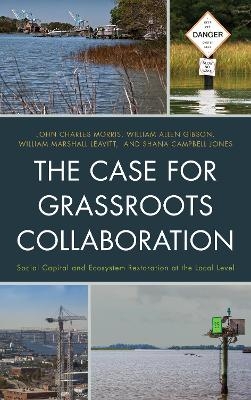
The Case for Grassroots Collaboration
Lexington Books (Verlag)
978-0-7391-7696-2 (ISBN)
The nation’s approach to managing environmental policy and protecting natural resources has shifted from the national government’s top down, command and control, regulatory approach, used almost exclusively in the 1970s, to collaborative, multi-sector approaches used in recent decades to manage problems that are generally too complex, too expensive,, and too politically divisive for one agency to manage or resolve on its own. Governments have organized multi-sector collaborations as a way to achieve better results for the past two decades. We know much about why collaboration occurs. We know a good deal about how collaborative processes work. Collaborations organized, led, and managed by grassroots organizations are rarer, though becoming more common. We do not as yet have a clear understanding of how they might differ from government led collaborations.
Hampton Roads, Virginia, located at the southern end of the Chesapeake Bay, offers an unusual opportunity to study and draw comparative lessons from three grassroots environmental collaborations to restore three rivers in the watershed, in terms of how they build, organize and distribute social capital, deepen democratic values, and succeed in meeting ecosystem restoration goals and benchmarks. This is relevant for the entire Chesapeake Bay watershed, but is also relevant for understanding grassroots collaborative options for managing, protecting, and restoring watersheds throughout the U.S. It may also provide useful information for developing grassroots collaborations in other policy sectors.
The premise underlying this work is that to continue making progress toward achieving substantive environmental outcomes in a world where the problems are complex, expensive, and politically divisive, more non-state stakeholders must be actively involved in defining the problems and developing solutions. This will require more multi-sector collaborations of the type that governments have increasingly relied on for the past two decades. Our approach examines one subset of environmental collaboration, those driven and managed by grassroots organizations that were established to address specific environmental problems and provide implementable solutions to those problems, so that we may draw lessons that inform other grassroots collaborative efforts.
Dr. John Charles Morris is professor of public administration and Ph.D. graduate program director in the department of urban studies and public administration at Old Dominion University in Norfolk, Virginia. Dr. William Allen Gibson is professor of political science and chair of the department of political science at Virginia Wesleyan College, Virginia Beach, Virginia, where he teaches environmental policy and public administration. Dr. William Marshall Leavitt is associate professor and MPA director at Old Dominion University. Shana Campbell Jones, J.D., is an environmental lawyer and directs the Virginia Coastal Policy Clinic at William & Mary Law School.
List of Figures
List of Abbreviations
Foreword
Acknowledgments
Introduction
Chapter 1: Grassroots Collaborations to Solve Environmental Problems
Chapter 2: A Framework for Collaboration: Building Social Capital, Improving Environmental Outcomes, and Maximizing Democratic Values
Chapter 3: The Chesapeake Bay: Local Efforts, Regional Connections
Chapter 4: Restoring Princess Elizabeth’s River
Chapter 5: The Return of the Oyster to the Lynnhaven River
Chapter 6: The Nansemond: A Tale of Two Rivers
Chapter 7: Conclusion: One Watershed at a Time
Appendix: List of Interviewees
Reference List
About the Authors
Index
| Verlagsort | Lanham, MD |
|---|---|
| Sprache | englisch |
| Maße | 159 x 237 mm |
| Gewicht | 562 g |
| Themenwelt | Sachbuch/Ratgeber ► Natur / Technik ► Naturführer |
| Naturwissenschaften ► Biologie ► Ökologie / Naturschutz | |
| Sozialwissenschaften ► Politik / Verwaltung ► Staat / Verwaltung | |
| ISBN-10 | 0-7391-7696-X / 073917696X |
| ISBN-13 | 978-0-7391-7696-2 / 9780739176962 |
| Zustand | Neuware |
| Haben Sie eine Frage zum Produkt? |
aus dem Bereich


